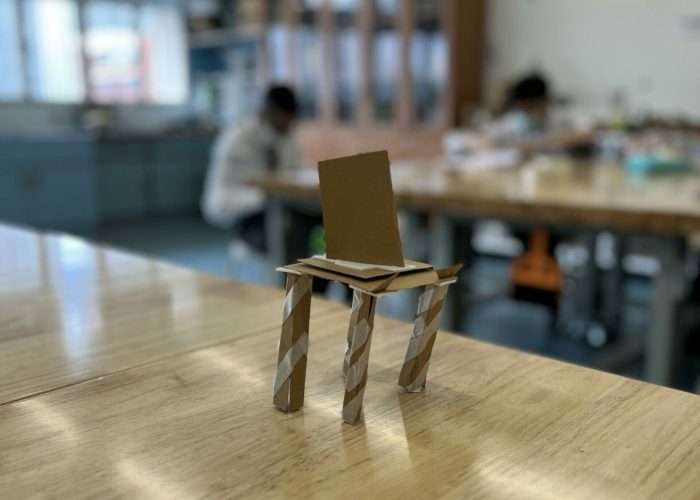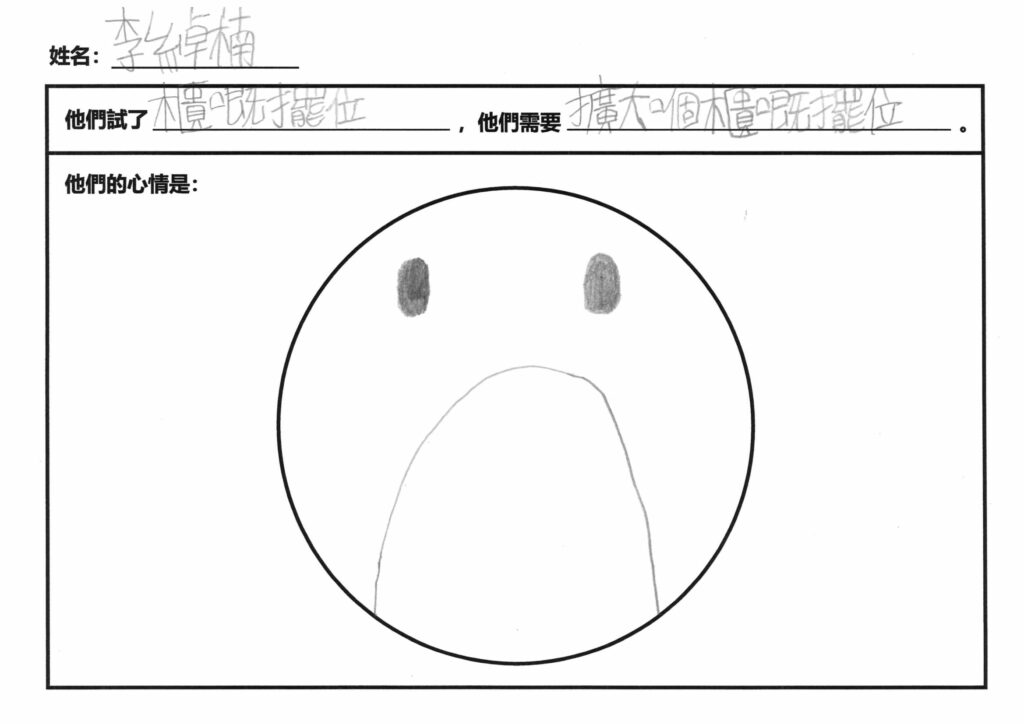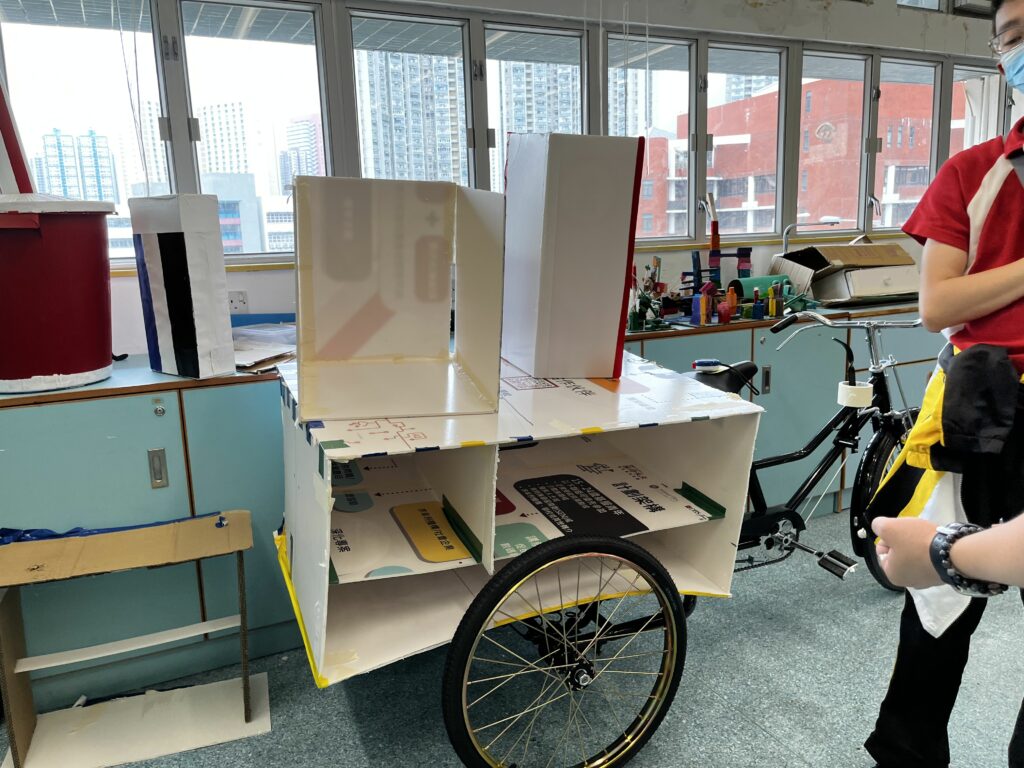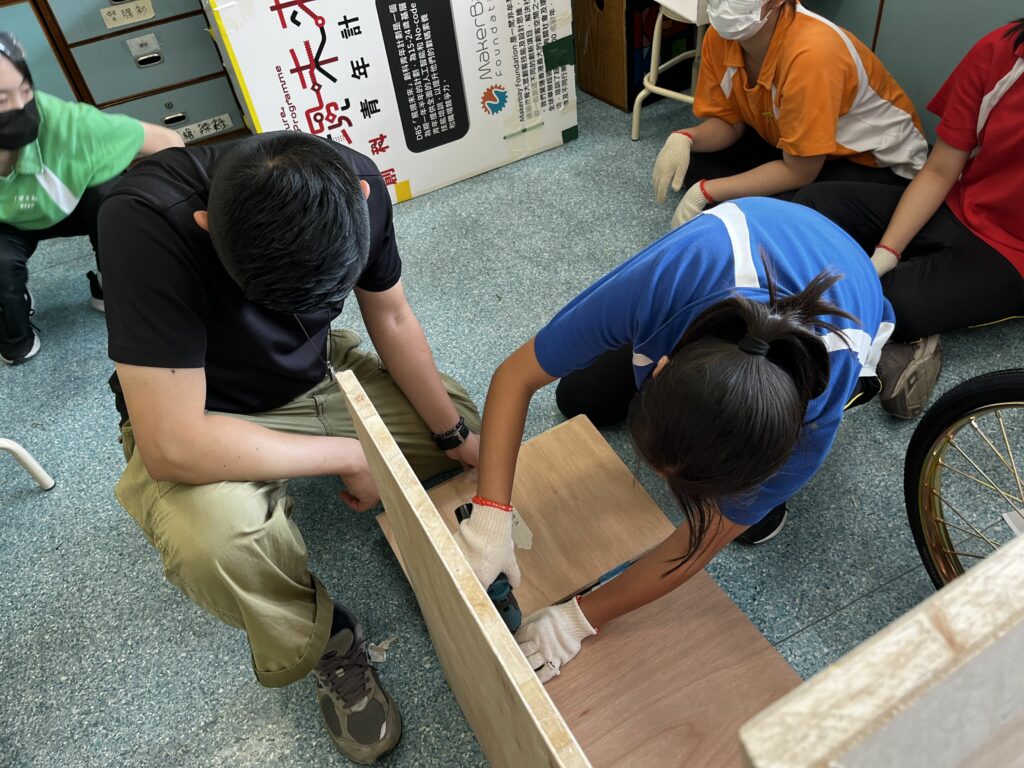The Education Bureau has been actively promoting inclusive education for many years, allowing students with special educational needs (SEN) to receive education in mainstream schools and learn together with their peers. Special educational needs mainly include attention deficit/hyperactivity disorder (ADHD), autism, communication disorders, emotional and behavioral problems, hearing impairment, intellectual disabilities, and physical disabilities.
Earlier, we provided a Design Thinking class that consisted of 12 sessions for TWGHs Mr & Mrs Kwong Sik Kwan College, to explore the potential of SEN students. In this class, we guided a group of SEN students to design a mobile coffee cart for Coffee Society. Creating a physical coffee cart is a highly challenging task, moreover the students were not designing it for themselves but for others, making it even more difficult. We believe that “Learning by Making” was the focus of this class.
Lesson 1: Building Empathy in the Classroom


Design thinking consists of five steps: empathise, define, ideate, create prototypes, and test. It is often challenging for SEN students to empathise. To cultivate their empathy, we can start by designing customised teaching materials for them. In this class, we began with a warm-up activity of “designing a desk for your classmate.” Through the process, students realised the importance of empathy and expressed their ideas to others, helping them understand what it meant to “design for others.” This lesson also helped us understand the strengths and personalities of each student.
Unlike ordinary classes that adopted the same teaching materials for all students, project-based learning put students in the center, so that everyone can learn at their own pace. Therefore, understanding the students’ learning abilities, including reading, graphical interpretation, and engaging in hands-on activities, helps us design the content and materials for future lessons.
Lessons 2 and 3: Coffee Cart 1.0




Lesson 4: "I know I don't know you well, so I ask."




After completing the coffee cart 1.0, we invited members and teachers of the Coffee Society for interviews and had them simulate the process of using the cart. Before the interviews, we assigned different roles to each student, such as making an introduction, asking questions, taking record and photos, and designed a worksheet to help them document the findings more effectively. On the left side of the worksheet, they recorded behaviors and feelings that were difficult to express; on the right side, they recorded users’ questions and suggestions expressed in the conversation. Observing others’ emotions was the key learning for students in this lesson. We highlighted the difference among different emotions through demonstrating various emojis, followed by asking students to draw the observed user emotions and explain their drawings.
Understanding emotions is a complex process, as people may not always express their emotions explicitly. Apart from observing facial expressions and behaviors, it is also important to observe the messages conveyed between sentences. Breaking down “observing others’ emotions” into smaller tasks helps students better comprehend different emotions.
Lessons 5 to 7: Co-create "One" Design




After the interviews, we discovered that the usage of the coffee cart differed from the original planning, and there were many areas that needed improvement. For example, we were unaware of the need for a coffee grinder, the height of the coffee cart was not suitable, and more space needed to be reserved for the working table. Furthermore, only the external appearance was developed for the 1.0 version, while the internal compartments and the door position were still unfinished. Consolidating the collected data, we continued to brainstorm the design of the cart.
As the coffee cart had to accommodate various equipment and supplies, we needed to consider how design its interior to save space and make it user-friendly. First, we asked the students to conceptualise the placement of the equipment on a blueprint and draw the compartments, followed by taking accurate measurements. Since SEN students are weaker in spatial recognition, we used a miniature model to simulate the structure of the compartments, assisting them in designing the space distribution of the coffee cart. Through sharing and discussion, the details of the coffee cart gradually took shape. We then refined coffee cart 1.0 according to the design drawings, modifying the equipment on the cart to the correct dimensions and adding shelf dividers.
During this process, we deeply realised that communication and collaboration require a significant amount of time. What is effective communication? It means when you say ABC, others receive ABC. However, we often intend to say ABC, but others only receive AB, or even receive CDE. Sometimes, SEN students may not want to speak or only speak without listening.
What is collaboration? It is more complex than communication because it involves communication, analysis, and making response. In the class, cultivating their communication and collaboration skills is another challenge. We acted as facilitators, encouraging them to speak up and express their opinions, while reminding them to pause and listen to others. This helped consolidate everyone’s ideas and reach consensus.
Initially, they often focused on completing their own tasks and seldom communicate with others. However, later on, they were able to work together as a team and openly share and listen to others’ ideas, which was a significant progress.
Lessons 8-11: Overcoming Fear and Gaining Satisfaction From the Coffee Cart




The design of the coffee cart went through numerous obstacles before reaching a consensus. The compartment was divided into three sections. When viewed from the perspective of the barista, the right side contained a refrigerator, the middle held water and coffee beans, and the left side had a double-door design for storing electrical cords, tissue paper, and cups. We divided the students into two groups where one worked on the truck compartment, while another group focused on creating the cabinet doors. To equip them for completing the coffee cart, we arranged a session about basic woodworking skills, including sawing wood, screwing in bolts, and assembling parts.
We still remember their resistance and fear during their first attempt at using a drill. However, once they took that first step and tried, they overcame their fear and even became addicted to the process. In the last few class sessions, one student felt proud of his proficient screwing technique and actively asked which parts needed screws and provided support. Fear stems from the feeling of unknown. While knowledge from books is undoubtedly important, without real-life experiences, that knowledge remains confined to the pages of a book. This is why practical experience is crucial for students.
Throughout the production process, they gradually developed a sense of satisfaction and belonging to the products they created. Despite encountering various challenges, such as the cabinet doors being blocked by the wheels or the discordant positioning of electrical cords, the collective efforts of everyone’s hard work resulted in the birth of a functional coffee cart.
Lesson 12: Finding One's Role and Position


In the last session, the mobile coffee cart was officially put into a “trial operation” and highly recognised from the teachers and students. Looking back at these twelve design thinking session, they encompassed diverse exercises that allowed students to discover their own positions. Some excelled in organising data, some were good at giving commands, and others were skilled at hands-on craftsmanship. It is often said that schools are a microcosm of society. This inclusive and applied learning program may enable SEN students to integrate into society earlier and also help school staff understand, accept, and respect the differences among students.
The focus of the class revolved around “Empathy”. We hoped that students could think from the users’ perspective and put themselves in the users’ shoes. As mentors, we also needed to reflect on whether the class arrangements were in line with their perspectives.


